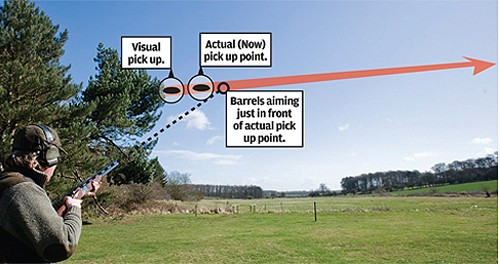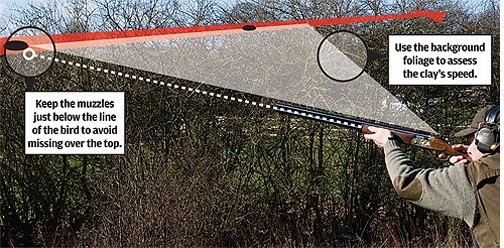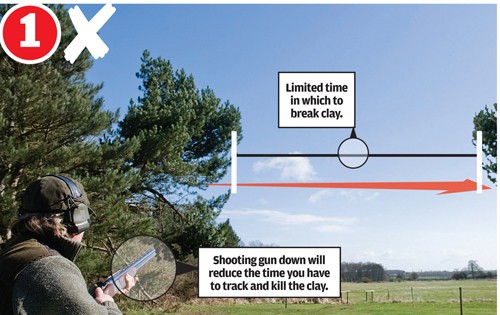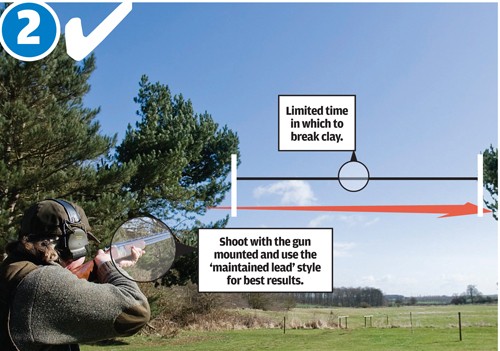Win CENS ProFlex DX5 earplugs worth £1,149 – enter here
Crosser clay targets – here’s how to shoot them
The clay that's crossing in front of the stand is probably one of the most common targets you’re ever likely to encounter on an English sporting layout
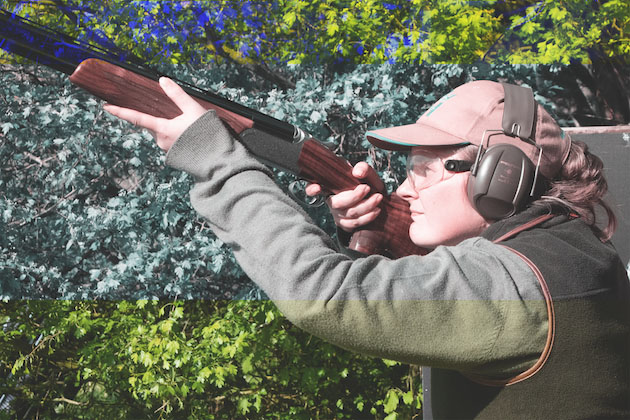
Crosser clay targets – that is the clay that’s crossing in front of the stand – are probably one of the most common clayshooting targets you’re ever likely to encounter on an English sporting layout.
Because they’re so common, you’d expect that clayshooters frequently nail them. But actually they don’t.
Clayshooters assume that crosser clay targets will be easy because:
- You can work out where to kill the target
- They’re visible for a while
- They don’t have misleading traits
Read the advice here on how to shoot crosser clay targets and you’re likely to be pleased with how your scores improve. (If you’re new to clayshooting, you might like to read our clayshooting tips for beginners here.)
You might hit clays travelling from right to left but miss anything going in the other direction.
I sometimes refer to this psychological problem as a shooter ‘hitting a wall’ and it’s a mental thing where the shooter simply can’t swing the muzzles past a certain point.
To solve it, mentally take a step backwards, reassess what you’re trying to do, follow your normal shooting procedure and concentrate on simply hitting the clay.
Say ‘now’
As you’ll always see how the clay is going to be presented before it’s your turn to shoot, here’s a little tip: Watch for the clay as it’s called and say to yourself ‘now’ when you first see it.
There’ll inevitably be a slight delay between the point when you pick up the clay visually and the moment you say now.
The ‘now’ point is the ‘actual pick up point’ as your brain takes time to register the fact that your eyes have seen the clay is in flight.
As such, you need to get the muzzles of the gun slightly ahead of your ‘now’ point, with an initial stance to match, so that you’re in the ideal position to swing and fire.
If you don’t you’re going to be playing catch-up.
If your feet/stance position was set for the perceived ‘visual’ pick up point – and not your ‘now’ point -you might find that your upper body cannot physically turn enough to take a comfortable shot.
Crossing/incoming or quartering clay
This target can often be a bit of a bogey clay for shooters. The way to deal with it is to try and treat it in exactly the same way as you would a conventional crosser.
Watch how the clay is presented. Tracing the flight line of the clay with your finger will definitely help imprint the clay’s line of travel in your mind.
Knowing the precise path of the clay will enable you to judge your initial pick up point and also your intended kill zone.
Then consider your shooting stance and gun mount. (Read our tips on standing correctly to shoot clays.)Don’t even think about trying to shoot ‘gun up,’ as this will tempt you into aiming at the target – and you’ll find the gun gets very heavy, very quickly.
Keep your weight forward, remembering that in this case there’ll be no reason whatsoever to transfer weight onto the back foot.
To make sure you don’t physically ‘run out of swing’ (and by that I mean you can’t swing the muzzles any further without moving your feet) position the toe of your leading foot towards the kill zone.
Keep the stock just out of the pocket of your shoulder with the muzzles of the gun pointing at, or just in front of the pick up point. Make sure you keep the barrels just below the flight line so that you don’t obscure your view of the clay.
Just as the target is nearing your kill zone, bring the gun up into the shoulder – making sure your face is planted firmly onto the stock.
Although there’s no real hard and fast ‘best’ shooting style to nail this type of clay, I reckon that the good old pull away method will give consistent results.
As such, the important thing to remember is to keep the swing going and let its inertia and acceleration get the muzzles ahead of the target in a smooth and unhurried fashion.
Without stalling, and when your instinct and hand/eye coordination tells you that everything is correct – pull the trigger.
Always remember – get the basics right; the preparation, stance and swing, and breaking this type of clay can be simplicity itself as it relies more on ‘instinct’ than style.
Instinctive shooting
If someone chucks an object towards you, you’ll automatically move forward, extend your arm and catch the thing.
You don’t hesitate, wondering to yourself, hmm, how fast exactly shall I move forward? And how far shall I stick my arm out?
Instinctive shooting works in exactly the same way… but remember, in shooting parlance, getting yourself ready before the ball is thrown simply makes it easier to catch!
Low crossers
These are probably the easiest of the crossing clays to master, probably because as the clay is travelling closer to the ground its speed and line is easier to assess.
A classic mistake when shooting this type of target is to shoot high and miss over the top, so it’s important you keep the muzzles just below the line of the clay.
Also be aware the flight line might deviate as the clay loses momentum at the end of its travel so you’ll have to allow for this before shooting, if you have to take the clay late.
Super-fast crosser
These are the trickiest. Choose your stance to accommodate your chosen kill point, then bring the muzzles halfway back towards the trap, this should be somewhere just after the visual pick-up point.
Because it’s a really quick clay, the kill zone is limited.
Unless you’re really, really quick and smooth with your gun mount, in this instance it might be best to shoot gun up.
Also, because we’re almost in ‘snap shooting’ mode it might be best to utilise a ‘maintained lead’ style.
Try to swing through or pull away on this type of clay and the target will probably be off and away over the horizon before you’re ready to pull the trigger.
As soon as you pick up the clay visually start your swing, keeping the muzzles ahead of the clay.
To a certain degree, you must let instinct take over – when you feel the lead is correct pull the trigger and let the shot string do the rest.
Jonty, a member of the North of English Shooting team advises on shooting crosser clay targets: “It is a fine line between shooting too early or too late. It is important to decide where you are going to break them. Mounting too soon can lead to hesitation and stopping your swing – it needs to be smooth and continuous.”
Related Articles
Get the latest news delivered direct to your door
Subscribe to Shooting Times & Country
Discover the ultimate companion for field sports enthusiasts with Shooting Times & Country Magazine, the UK’s leading weekly publication that has been at the forefront of shooting culture since 1882. Subscribers gain access to expert tips, comprehensive gear reviews, seasonal advice and a vibrant community of like-minded shooters.
Save on shop price when you subscribe with weekly issues featuring in-depth articles on gundog training, exclusive member offers and access to the digital back issue library. A Shooting Times & Country subscription is more than a magazine, don’t just read about the countryside; immerse yourself in its most authoritative and engaging publication.






